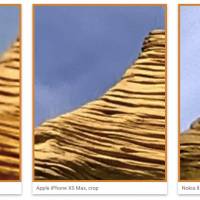
The Moto G7 Plus was unveiled back in February together with the regular Moto G7 and the Moto G7 Play. Motorola has been busy with the mid-rangers but hasn’t exactly shown to us what the new phones can really offer. The Moto G7 Plus stands out among the three because of its being camera-centric. The device is focused more on imaging as made possible by the 16MP dual camera setup, optical image stabilization (OIS), AI, and new camera software.
Moto G7 Plus boasts a 6.2-inch screen with an all-glass finish, Qualcomm Snapdragon 636 processor, and Android 9.0 Pie OS. The device features a dual rear camera system–16MP with 1.22µm pixels and an f/1.7 wide-angle lens with Optical Image Stabilization (OIS) and 5MP with an f/2.2-aperture lens. Don’t expect any telelens for those zoom shots. More imaging features are available like the dual-tone LED flash, phase detection autofocus (PDAF), auto HDR, 2160 @ 30fps (4K) recording, and 1080/30fps (default).
The phone scored only 80 on DxOMark (84 Mobile, 72 Video) so its way down the list. It still has several advantages. For one, the image quality is good enough for a decently-priced phone. You can say, the photos are decent enough. It can’t compete with other camera-centric premium flagships.

The Moto G7 Plus shows well-preserved detail outdoors/indoors, generally accurate white balance outdoors, fast and accurate autofocus that is also repeatable. When you use flash with additional lighting, you may see good detail and accurate target exposure. For videos, you may notice pleasant color rendering in natural scenes and good target exposure in low-contrast scenes.
Some disadvantages of the camera, there’s a limited dynamic range, low target exposure, undersaturated color, inconsistent color rendering, many visible artifacts, slightly yellow-white balance outdoors, luminance/chromatic noise visible outdoors, and Bokeh mode often failing to activate. The video also offers underexposure in HDR scenes and limited dynamic range, very visible noise in low light, ineffective stabilization, and autofocus instabilities. Many visible artifacts are also present like ringing, judder, and aliasing.















